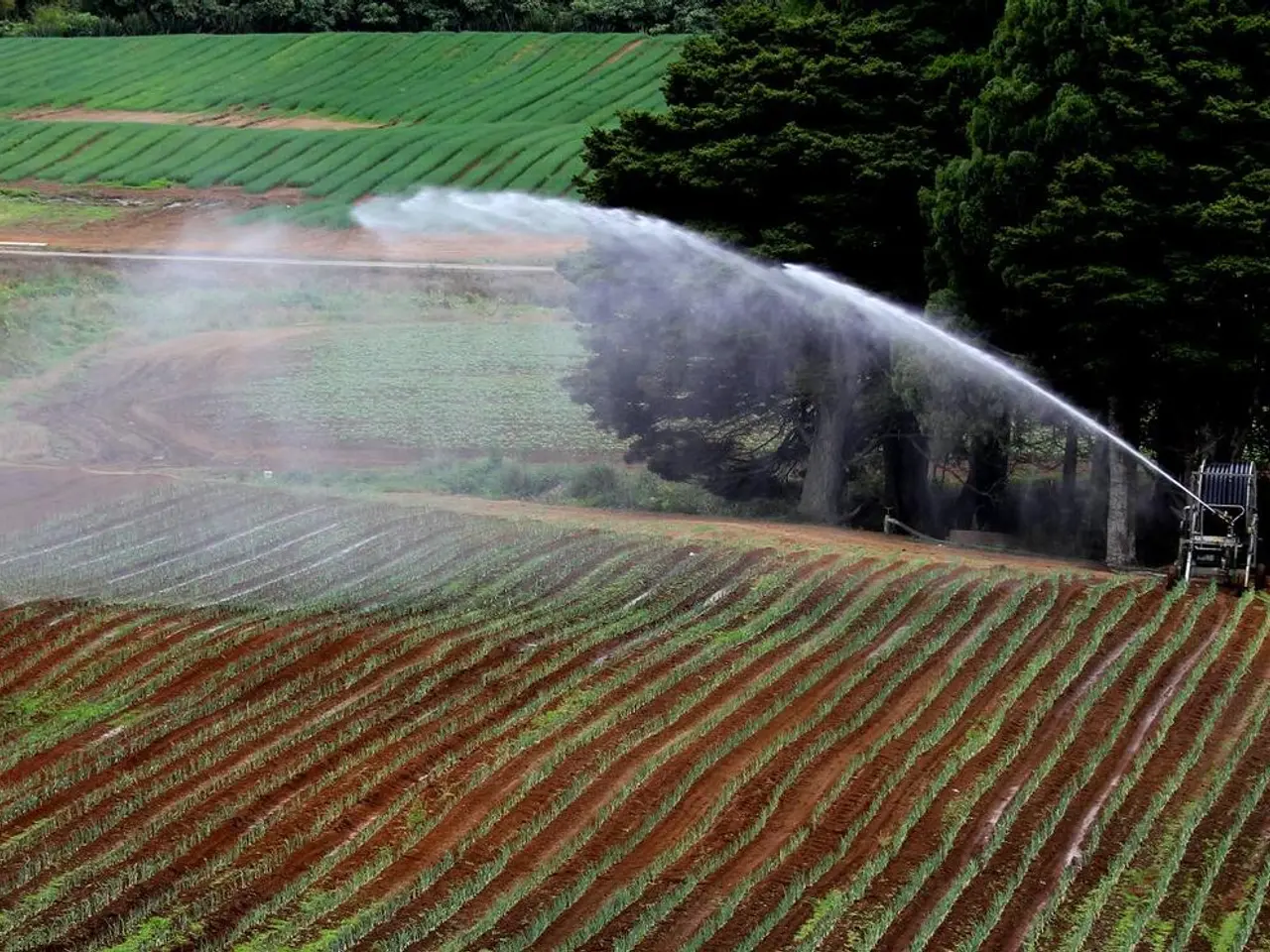Climate Change Solutions through Permaculture Practices
In the 1970s, the design system of permaculture was born, the brainchild of Bill Mollison and David Holmgren. This innovative approach focuses on caring for the Earth, people, and sharing resources, with a mission to create sustainable communities and combat climate change.
Permaculture supports community-based economies, promoting the use of cooperatives and local currencies, which helps local areas reduce global carbon emissions. The movement is growing worldwide, with a focus on regenerative farming, community actions, and social, economic, and ecological justice.
One of the key benefits of permaculture is its ability to lock carbon in the soil, reversing the loss of carbon caused by traditional farming methods like plowing. Permaculture fields have more carbon in the soil, better soil structure, and more beneficial bugs compared to regular farms, making ecosystems stronger and better able to fight off climate change.
The permaculture movement also emphasises the importance of water conservation, with methods such as rainwater collection and reuse, and wastewater reuse for irrigation. These practices help to reduce water usage and promote a more sustainable approach to agriculture.
In addition, permaculture encourages the use of renewable energy sources like solar, wind, and water. The movement pushes for a shift from fossil fuels to cleaner, more sustainable energy options.
Permaculture values the leadership of indigenous communities and their traditional knowledge in healing the planet. The movement recognises the importance of working with local communities and respecting their wisdom in creating sustainable solutions.
The permaculture movement is not just limited to farms, but also includes the creation of demonstration sites like ecovillages and intentional communities. These sites serve as models for sustainable living, showcasing renewable energy, responsible water management, and strong local economies.
Examples of successful permaculture communities include El Organopónico in Havana, Cuba, with 200 members, and Asaṅga, an ecovillage in the Pacific Northwest, home to 30 people and covering 1 acre.
The permaculture community came together in 2015 at the International Permaculture Convergence to discuss and adopt solutions against climate change. The organisation formed around shared principles of sustainable design and ecological restoration to address global environmental challenges.
The European Union's PLACARD project highlights the importance of having clear ways to organise climate change and disaster risk information. The EU might set up a special group to lead and fund the creation of a Climate Action Knowledge Graph, which would gather existing information, check it with experts, and create a shared framework for organising climate knowledge.
Permaculture uses composting and biochar to increase soil organic carbon, improving soil health and fertility. Biochar, a long-lasting carbon form, helps soil keep nutrients and water, and raises carbon levels that can last for thousands of years.
The permaculture movement is working towards creating resilient communities and demonstration sites that show how to fight climate change. By focusing on sustainable design, regenerative agriculture, and community action, permaculture offers a solution to the problem of regular farming causing a quarter of all greenhouse gases. Through the sharing of knowledge and best practices, the permaculture movement inspires others to use these methods in their own areas, creating a ripple effect of positive change.
Read also:
- California links 100,000 home storage batteries through its Virtual Power Plant program.
- Investment secured for Good Fashion Fund 2.0 to the tune of $60 million by FOUNT.
- Airbus Readies for its Inaugural Hydrogen Fuel-Cell Engine Test Flight of Mega Watt Class
- Air conditioning and air source heat pumps compared by experts: they're not identical, the experts stress








